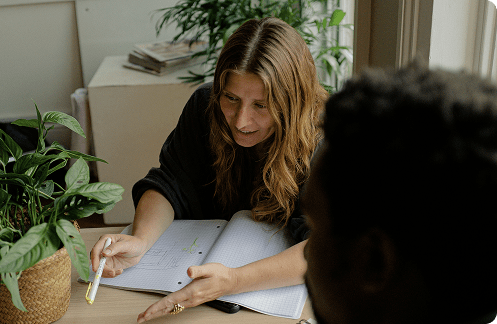Product designer Remote Jobs - US companies
The development and creation of digital products that provide a seamless user experience and align with business objectives are the main contributions of product designers. These positions emphasize the integration of technical expertise with creativity to develop user-centered interactions, engaging visual elements, and intuitive interfaces. Product designers are accountable for each phase of the design process, from conceptualization to final implementation, to guarantee that the product is visually appealing but also functional and user-friendly.
Cross-functional teams, including developers, product managers, and other stakeholders, collaborate closely with Product Designers in a remote context to realize their design vision. They employ a variety of design tools and methodologies, including wireframing, prototyping, and user testing, to iterate on designs based on user feedback and project requirements. Remote Product Designers must also possess strong communication and project management skills to guarantee that their designs are both timely and consistent with the overall product strategy, even when working across multiple time zones.
Skills Needed for Product Designer Jobs
Technical skills
Product Designers need a robust set of technical skills to excel in their roles. Proficiency in design software such as Adobe XD, Sketch, or Figma is essential for creating high-fidelity prototypes and visual designs. Understanding user experience (UX) principles and being able to conduct user research and usability testing is also crucial. Additionally, Product Designers should have a strong grasp of front-end development basics, like HTML, CSS, and JavaScript, to effectively communicate with developers and ensure design feasibility. Knowledge of responsive design, accessibility standards, and design systems further enhances a designer's ability to create cohesive and user-friendly products.
Soft skills
These are equally important for Product Designers, particularly in a remote environment. Strong communication skills are vital for effectively articulating design concepts and collaborating with cross-functional teams. Product Designers must be able to listen to and incorporate feedback, adapting their designs to meet user needs and project goals. Critical thinking and problem-solving abilities are essential for navigating design challenges and finding innovative solutions. Additionally, time management and organization skills are key to juggling multiple projects and meeting deadlines in a fast-paced, often asynchronous, remote work setting.
Prototyping and Wireframing
Prototyping and wireframing are essential technical skills for Product Designers, as they allow the creation of low-fidelity and high-fidelity representations of the product before its full development. Proficiency in tools like Figma, Sketch, or Adobe XD enables designers to visualize and iterate on concepts quickly, facilitating better communication with stakeholders and developers. These skills are critical for ensuring that the design aligns with user needs and business goals, and they help in identifying potential issues early in the design process.
Interaction Design
Interaction design is a key aspect of Product Design that focuses on how users interact with a product. Product Designers need to deeply understand interaction design principles, such as user flows, animation, and micro-interactions, to create intuitive and engaging user experiences. Familiarity with tools like InVision or Principle for creating interactive prototypes is also beneficial. This skill ensures that the product is not only visually appealing but also easy to use, enhancing the overall user experience.
Top 5 Interview Questions for Product Designers
How do you approach data analysis when assessing a new product feature?
This question tests your ability to analyze data to inform product decisions. Data analysis is crucial for understanding how a new feature impacts user behavior, product performance, and overall business goals. An example answer is discussing your process for gathering relevant data, using tools like SQL or Excel to analyze user engagement metrics, and interpreting the results to make data-driven recommendations. You might also talk about how you validate assumptions and use A/B testing to measure the effectiveness of the feature.
What methods do you use to prioritize product features?
This question evaluates your understanding of feature prioritization, a key aspect of product management. Prioritizing features ensures that the most valuable updates are delivered to users first, aligning with business objectives. An example answer might involve explaining how you use frameworks like the RICE (Reach, Impact, Confidence, and Effort) scoring model to rank features based on their potential impact and feasibility. You could also discuss how you balance user needs, technical constraints, and business goals when making prioritization decisions.
How do you ensure the accuracy of product metrics?
This question assesses your attention to detail and your ability to maintain data integrity. Accurate product metrics are essential for making informed decisions and tracking product success. An example answer:
- Describe your process for setting up data validation checks.
- Describe how you use tools like Google Analytics or Mixpanel to monitor data accuracy.
- Regularly auditing metrics to catch discrepancies.
You could also talk about how you collaborate with data engineers to ensure the underlying data infrastructure supports reliable reporting.
What techniques do you use to conduct market analysis for a product?
This question examines your skills in understanding market trends and competitive landscapes, which are crucial for product positioning and strategy. Conducting market analysis helps product analysts identify opportunities, threats, and user needs that can shape product development. An example answer is discussing your approach to gathering market data through surveys, competitor analysis, and industry reports. You could also talk about using SWOT (Strengths, Weaknesses, Opportunities, Threats) analysis to inform product decisions and align with market demands.
How do you use SQL to extract insights from product data?
This question tests your technical proficiency with SQL, a critical skill for product analysts working with data. SQL queries databases, extracts meaningful insights, and supports data-driven decision-making. An example answer could involve explaining how you write complex SQL queries to pull specific data sets, join multiple tables to analyze relationships, and use aggregate functions to summarize data. You might also mention how you use SQL to create custom reports that help stakeholders understand product performance and user behavior.












